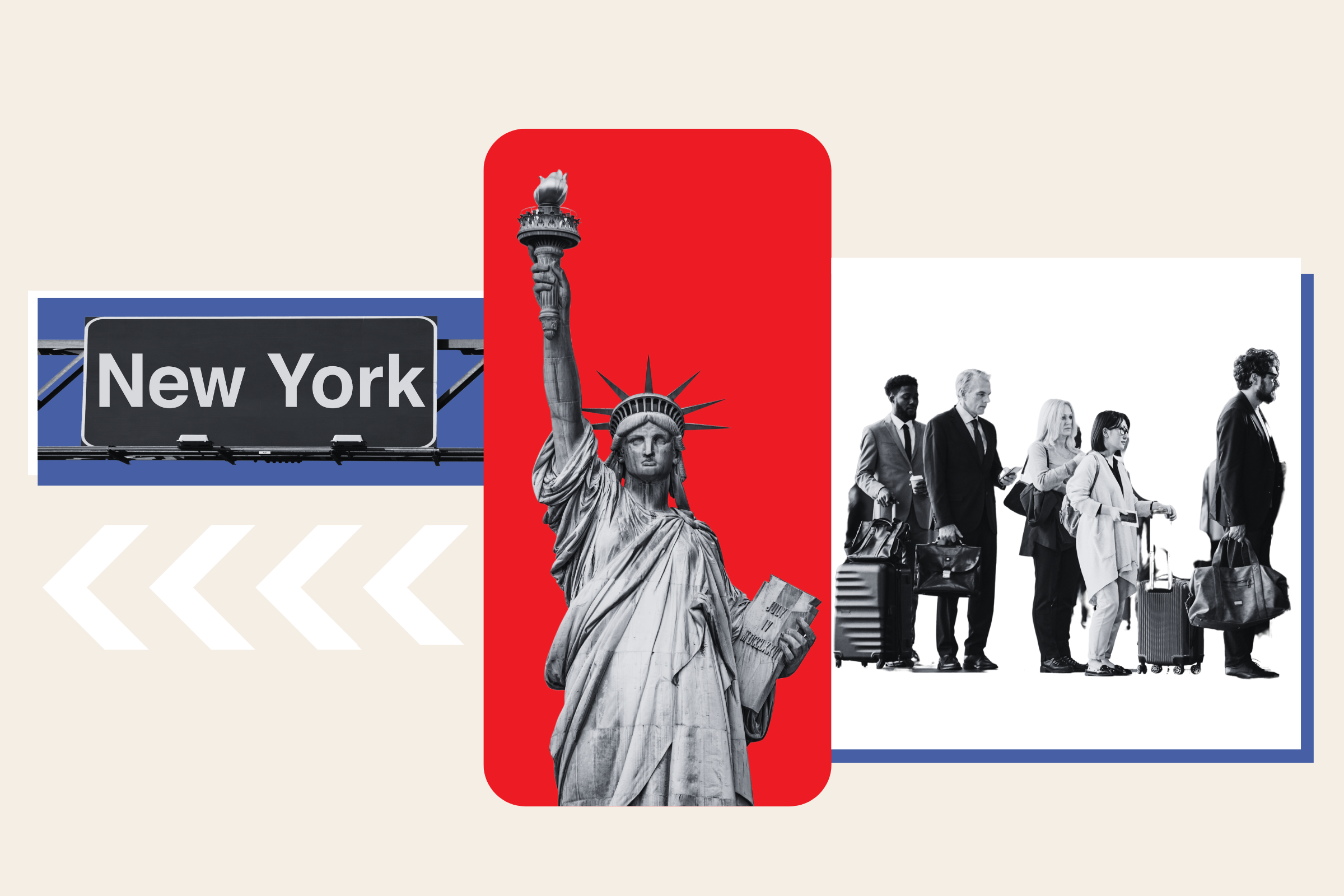Have you ever felt the pet-mom or dad guilt when leaving your furry friend at home while you are on vacation? Have you ever considered bringing your pet along with you? Newsweek has gathered the top 9 airlines that allow you to bring your furbabies on board with you.
Although all airlines are required to allow disabled passengers to fly with their service animals in the cabin, some airlines do not allow any other dogs on board, while others allow them with restrictions, or only in the cargo area.
If you're planning on traveling internationally with your pet, you should also make sure that you check the specific country's policies on allowing animals in the country, as they vary from depending on the destination.
Below is a list of airlines that allow pets on board, and their pet policies.
American Airlines
American Airlines allows you to travel with pets on board, but their policy is limited by restrictions. According to their website, you can travel with a pet on most flights, for up to 12 hours, or flights to / from select locations, which include: the 48 contiguous United States, the U.S. and Canada, Alaska, Mexico, Puerto Rico, St. Croix, and St. Thomas.
Depending on animal breed and size, your pet may be allowed to travel as a carry-on or be transported through American Airlines Cargo. Carry-on pets are limited to cats and dogs that meet the size, age, and destination requirements, which you can see here.
American Airlines' pet fee is around $125 per carrier, and allows a maximum weight of 20 lbs.
United Airlines
United Airlines allows in-cabin pets as long as they are "domesticated cats and dogs that can fit in a travel carrier underneath the seat in front of you."
Their website states that pets are allowed in-cabin on select United flights, but can't be in-cabin on flights to, from, or through Hawaii and other international locations including Australia, the UK, and some other countries in Europe and Africa.
Their pet fee is $125 each way, and an additional $125 service charge for each stopover of more than four hours within the U.S., or more than 24 hours outside of the U.S., and they have no maximum weight requirements, which you can read more about here.
Southwest Airlines
Southwest Airlines allows you to take pets on board, as long as you've made a reservation in advance as pet space is limited.
Their policy is to accept pets on a first-come, first-served basis on all Southwest-operated flights until capacity is reached. The only pets allowed on board by the company are small cats and dogs in carriers that can be stowed under the Customer's seat, and they are not allowed to travel in-cabin on international flights or any itinerary that includes an international flight.
Their pet fee is $95 per carrier, and must be paid on the day of travel at the ticket counter, prior to proceeding through security. You can review their pet policy here.
Delta Airlines
Delta Airlines allows small dogs, cats, and household birds to travel in the cabin for a one-way fee, which is collected at check-in. But, in order to be allowed on board, your pet must fit the following requirements.
Your pet must be able to fit in a small, ventilated pet carrier that fits under the seat in front of you, it needs to be small enough to fit comfortably in a kennel without touching or protruding from the sides of the kennel, and have the ability to move around. Plus, the kennel must fit under the seat directly in front of you.
In addition, the kennel must be leak-proof and have ventilation openings on three sides, (four sides for international travel). The size of the kennel allowed varies by flight, so the airlines advises you to contact their customer service before booking.
Their pet fee is $125 per carrier, and the maximum weight requirement is about 20 lbs, you can review their pet policy allowance here.
JetBlue Airways
JetBlue Airways allows a maximum of two pets per traveler, each in their own carrier, and in order to bring a second pet, you must pay for a second seat. They only allow a maximum of six pets per flight, so it's best to book your tickets long before your trip if you want to secure a seat for your pet.
According to their website, only one pet per carrier is allowed, and the pet must have enough space to move around freely. Your pet carrier cannot exceed 17" L x 12.5" W x 8.5" H (43.18 cm L x 31.75 cm W x 21.59 cm H) and the combined weight of your pet and the carrier must not exceed 20 pounds.
Their pet fee is $125 each way and can be added in the Extras section during booking. You can check JetBlue Airlines pet policy here.
Alaska Airlines
Alaska Airline ranked most pet friendly airline in the nerdwallet ranking for 2021.
Passengers who are 18 years or older are allowed to travel with a pet in the cabin, as long as they do not occupy an emergency exit row or bulkhead row.
The First Class cabin can accommodate a total of one pet carrier per flight, and the main cabin can accommodate a total of up to five pet carriers per flight. They allow up to 2 pets of the same species and similar size to travel in the same carrier, as long as the animals are not in distress.
Pets allowed in the passenger cabin include dogs, cats, rabbits, and household birds. Dogs and cats must be at least 8 weeks old and must be fully weaned and accustomed to take solid food, without nursing, for a period of at least 5 days.
Their pet fee is $100 per pet, and their maximum weight requirement is 150 lbs in cargo, and there is no weight limit for a carry on. You can review their pet policy here.
Virgin America Airlines
Virgin America Airlines only allows you to bring your pet on board if you have a cat or a dog, as they do not offer travel to other kinds of pets. And even then, there are certain breeds that are not allowed on board, for health or safety reasons.
The airline does not allow animals in the main cabin unless they are assistance animals, and you need to book at least 7 days before you plan to fly, and the earlier the better, as we have limited space.
Their pet fee is $100 per pet and even though the website doesn't specify a maximum weight or size, it states that the minimum size cage the airline will accept is 71 x 52 x 54 cm. You can review their pet policy here.
Hawaiian Airlines
Hawaiian Airlines allows you to take on board only cats and dogs, which are permitted only on inter-island flights and flights between the State of Hawaii and North America, except flights to/from JFK, BOS, MCO, or AUS.
In order to be allowed to fly on Hawaiian Airlines, your pet must be in an approved carrier that will fit comfortably under the seat in front of you.
Their pet fees are $35.00 to travel within the State of Hawaii, and $125 to travel between the State of Hawaii and North America. The combined weight of the pet and kennel must not exceed 70 lbs. If the combined weight is in excess of 70 lbs, they may transport it via cargo. You can review their pet policy here.
Frontier Airlines
Frontier Airlines only allows pets to fly in the cabin and not as checked baggage.
Only certain animals are allowed in the cabin, and they include domesticated dogs, cats, rabbits, guinea pigs, hamsters, or small household birds.
They will not accept species such as large birds (e.g. parrots, macaws, cockatoos, birds of prey), rodents (including mice, rats, squirrels), beavers, ferrets, reptiles (including snakes), amphibians, spiders, and insects.
While flying with Frontier, your pet must stay in its carrier at all times, and the company also asks pet owners to not feed their pets in the aircraft. Their pet fee is $99 per pet and there are no maximum weight requirements. You can check their policy here.
What should pet owners need to know when flying with a pet?
Before booking your family holiday with your pet, you should be aware of the airline's requirements to guarantee your pet has a seat. You should also make sure to check the destination requirements for pet entry.
Dr Carly Fox, senior veterinarian Schwarzman Animal Medical Center-NYC told Newsweek: "Make sure you have all the documentation necessary when flying with your pet. This includes their full medical records and requirements for domestic and international travel.
"If you are traveling internationally, make sure to look up the country's requirements for entry several weeks to months ahead of time. This will allow you a window of time to complete all necessary testing, vaccinations, and paperwork, as these vary greatly by country."
Ideally, according to Fox, you should try to schedule a direct flight to minimize disruption for you and your pet, and if traveling on a long flight, you should book a flight at night to facilitate sleep/rest for your pet and yourself.
Fox also doesn't recommend traveling with a large dog who would need to go in cargo, unless it's for a permanent move/extended trip, adding:"If your pet does go to cargo, make sure they are properly labeled, including their crate, and have access to water.
"Double secure their crate door to prevent inadvertent opening. Ideally, schedule a direct flight in the early morning or late evening to optimize for milder temperatures and ask that your pet be kept in air conditioning up until take off. "
How do you prepare your pet for a flight?
To avoid any disruptions or delays, make sure to schedule your preflight veterinary appointment in advance of your flight, as veterinarians may not be able to accommodate last-minute requests for health certificates.
According to Fox, not all veterinarians can issue international travel certificates, so you should check with your vet's office ahead to make sure they are USDA certified. Before flying, your pet must be properly ID'd, and this includes having a labeled collar, a carrier, and a microchip prior to take off.
Fox suggests doing a trial run, to make sure your pet is ready for its trip, especially if it's their first time.
She said: "If your pet is not used to spending time in his/her carrier, try taking them around town in their carrier or go for a drive in the carrier. This will allow them to feel comfortable in advance of your flight."
You should make sure you have all their medication, and any emergency paper towels with you on the plane, to be ready for any inconvenience.

Uncommon Knowledge
Newsweek is committed to challenging conventional wisdom and finding connections in the search for common ground.
Newsweek is committed to challenging conventional wisdom and finding connections in the search for common ground.
About the writer
Maria Azzurra Volpe is a Newsweek Lifestyle Reporter based in London. Her focus is reporting on lifestyle and trends-related stories, ... Read more





